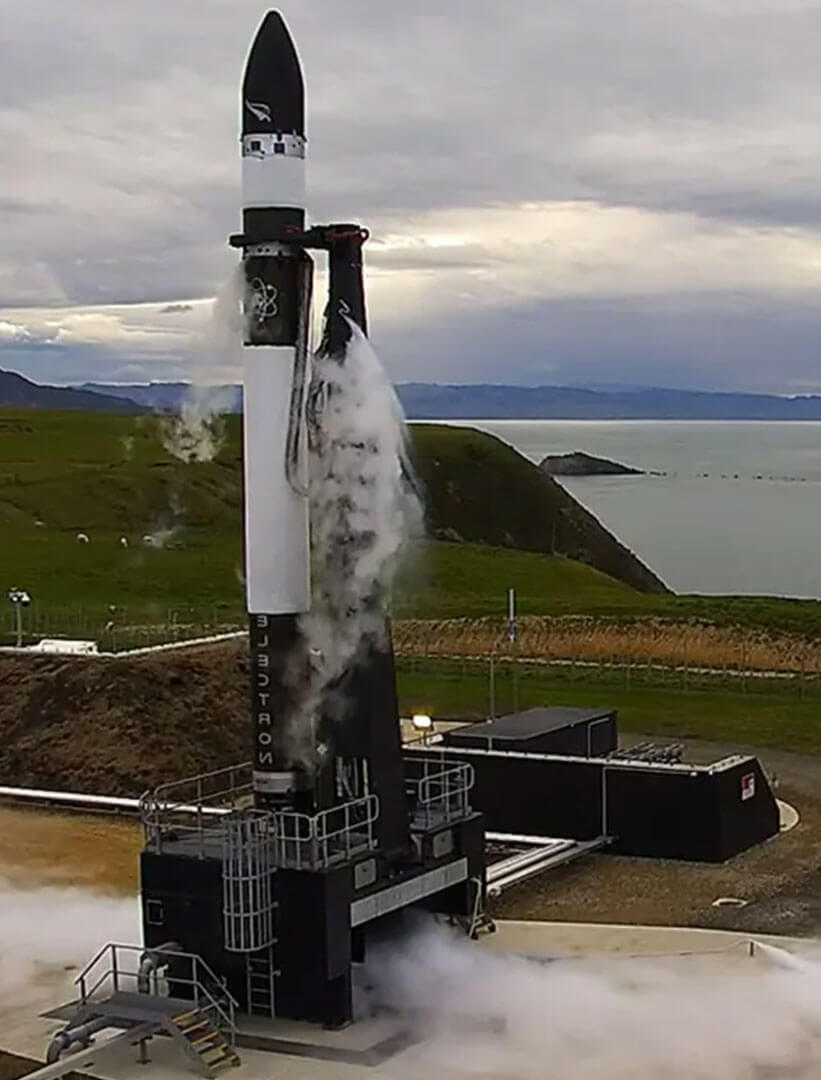Tyvak Nano-Satellite Systems, a Terran Orbital Corporation, built the spacecraft for the Cislunar Autonomous Positioning System Technology Operations and Navigation Experiment, otherwise known as CAPSTONETM. The spacecraft is based on Terran Orbital’s Voyager platform. The satellite includes a radio tower on top that extends its size from a traditional 12U form factor. CAPSTONETM will not go directly to the Moon but instead follow a “ballistic lunar transfer” that will take it out as far as 1.5 million kilometers before returning into lunar orbit. That transfer, which will take about four months to complete, is designed to save propellant, making the mission feasible for such a small spacecraft. The CAPSTONETM payload and its software are owned and operated by Advanced Space for NASA.
As a pathfinder for Gateway, a Moon-orbiting outpost that is part of NASA’s Artemis program, CAPSTONETM will help reduce the risk for future spacecraft by validating innovative navigation technologies and verifying the dynamics of the Near Rectilinear Halo Orbit (NRHO). Its location at a precise balance point in the gravities of the Earth and the Moon offers stability for long-term missions like Gateway and requires minimal energy to maintain. CAPSTONE’s orbit also establishes a location that is an ideal staging area for missions to the Moon and beyond.
CAPSTONETM launched aboard a Rocket Lab’s Electron rocket from the company’s Launch Complex 1 in New Zealand. With a highly ambitious schedule, CAPSTONETM will demonstrate key commercial capabilities. NASA partners will test cutting-edge tools for mission planning and operations, paving the way and expanding opportunities for small and more affordable space and exploration missions to the Moon, Mars and other destinations throughout the solar system.
NASA JPL invited Terran Orbital to NASA’s Deep Space Network (DSN) near Goldstone, CA for a tour. This is one of three DSN sites with the other sites being in Canberra, Australia and Madrid, Spain. Being one of three of the largest antennas in the world, it provided the telemetry data needed for our team to work to save CAPSTONE during its thruster anomaly.
CAPSTONE has used both 34m and 70m antennas. Its nominal communications configuration is for 256 kbps DL, with turnaround and one-way ranging which enabled CAPSTONE to demonstrate communications at multiple downlink data rates. Navigation information relies on three types of ranging data (turnaround, regenerative, one-way) as well as Doppler data. DSN has actively facilitated over 350 CAPSTONE contacts, underscoring the reliability and efficacy of the mission’s communication infrastructure.

Nation
Application
Operator
Configuration
Launch Date
Launch Vehicle
Mission Length
Mission Completion

The launch vehicle is CAPSTONE’s ride to space. Launching since 2017, Rocket Lab’s Electron rockets have delivered 100+ satellites to orbit on time and on target. Electron will provide the Lunar Photon upper stage and CAPSTONETM with the initial ride to low Earth orbit.
Once Electron reaches low Earth orbit, The Lunar Photon upper stage takes the reigns to deliver the CAPSTONETM spacecraft onto its highly efficient ballistic transfer orbit to the Moon.
